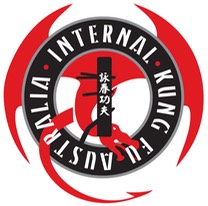- There is no difference in who started to study first; the one who achieves accomplishment is first.
- Students from the same teacher will differ in their skills.
- Touching the opponent's arm bridge makes the situation more favorable.
- When facing multiple opponents, it is easy to manage the situation.
- When chasing the opponent's arm bridge, beware of being led.
- When pushing the opponent's elbow, beware of being pulled.
- Learning the techniques without developing the skills will never bring any accomplishment.
- The ideal in Martial Arts is humanitarianism. Accomplishment uses diligence as a goal.
- When the opponent passes your arm bridge, avert the danger by turning the stance and facing with the appropriate posture.
- Strike when you should. Do not strike when you should not.
- Do not be too eager to strike. Do not be afraid to strike. One who is afraid of getting hit will finally be hit.
- Persistent attacks will surely gain you entry. Staying on the defensive too long will surely get you into trouble.
- The punch starts from the heart. The staff does not make two sounds. A kick does not miss.
- Power is generated from the joints. Strength originates from the heels.
- Store mental energy with the mind. Move chi with mental energy. Exert strength with chi. Generate power with strength.
- No harm will come if chi is nurtured naturally. Power can be stored but with enough to spare.
- Chi comes out of the Tan Tien, and travels along the waist, the thighs, and the back.
- Know yourself and your opponent, and you will always win.
- People do not know the extent of my skills, but I know their abilities.
- Go along with your opponent's failing posture in order to take advantage of it.
- Glass-like head, cotton-like belly, and iron-like arm bridge.
- You can strike anywhere when your arm bridge has passed beyond your opponent's three joints.
- Pass by the opponent's incoming arm bridge from above. Jam the opponent's bridge to restrict his movement.
- Create a bridge if the opponent's bridge is not present. Nullify the bridge according to how it is presented.
- Know the difference between Yin and Yang, real and feigned. Take advantage of any available opportunity.
- Sticking to the opponent while shifting hand position shows good control of the situation.
- Being stuck to by the opponent while attempting to shift your own hand position cannot produce the intended result.
- Bong Sau must not remain. Faan Sau should be closely paced.
- Know your own limit in the use of power. Releasing all out is 90% of the way to defeat.
- The knees lead the stance. The waist links the body. Where the mind goes, the eyes go, and the hands and feet follow.
- Strive to remain calm in the midst of motion. Loosen up the muscles and relax the mind.
- The three terrors of Wing Chun are Tan Sau, Bong Sau, and Fook Sau.
- Feet and hands work together, and the threat comes to an end.
- Beware of brute strength when facing someone from the same style. Beware of the situation in a confrontation.
- In uniting the waist with the stance, power can be generated.
- In a match do not expect any compassion.
- Grasping the throat is a ruthless technique. Once commenced, it cannot be stopped.
- Storing energy resembles pulling a bow. Releasing power is like shooting an arrow.
- Circular and straight accompany each other. Bent and straight complement one another.
- Extreme softness enables one to be hard. Being extremely natural enables one to be agile.
- Direct the mind to store spirit, not chi, in the body. Otherwise it leads to sluggishness. No power is obtained when occupied with chi.
- Use alterations in stepping forward and backward. Hands and feet should be closely coordinated.
- Invisible posture. Invisible kick.
- As long as you are sticking to your opponent, you are unlikely to lose. A well trained waist can prevent loss of balance.
- Hand techniques must follow the Yin Yang principle. Strength must be applied with inner power. There is a counteraction to every attack.
- Rapid moves are hard to guard against. Go in when the opponent slows down.
- Kicks lose nine times out of ten.
- The feet are like wheels, and the hands like arrows.
- A hand used for attack serves also to parry.
- Do not collide with a strong arm bridge. Get out of the way and take initiative to attack.
- During sticky hand practice, the hand which has entered beyond the elbow will win nine times out of ten.
- Do not follow, force, or butt against the opponent's hands.
- Destroying the opponent's center line will control his bridge.
- In Bong Sau the forearm inclines, the wrist is on the center line, and the fingers droop. A raised elbow weakens the force.
- The elbow must be strong. Then you can take on any attack.
- If the opponent grasps your arm bridge, do not oppose him with brute force. Go with the opponent's force and change into rolling hands. Turn around the situation to control him.
Moy Yat, Kwong Chi-Nam, and Moy Wo Tin. "Maxims of Wing Chun - Wing Chun Kuen Kuit." The Wing Chun Archive. Web. 01 July 2011. <http://www.wcarchive.com/articles/maxims-kuen- kuit.htm>.
